 Living Memory is a project with CWGC to mark the 141 days of the Somme campaign and encourage people across communities and schools to connect with local CWGC burials and cemeteries in their areas.
Living Memory is a project with CWGC to mark the 141 days of the Somme campaign and encourage people across communities and schools to connect with local CWGC burials and cemeteries in their areas.
http://www.cwgc.org/about-us/cwgc-projects/living-memory.aspx
In 2016 the Commonwealth War Graves Commission (CWGC) in partnership with Big Ideas Company are asking the public in the British Isles to re-connect with the war dead buried in their own communities. CWGC has 200 large sites in the UK, almost all in big city cemeteries and linked to the hospitals: the majority of these men either died of their wounds in hospital or (in 1918-19) died in the influenza epidemic. In total CWGC graves in the UK are located in over 12,000 locations. They must not be forgotten.
As part of the WW1 Centenary partnership, the World War Zoo Gardens project (Newquay Zoo) has been looking at how the First World War impacted on zoos and botanic gardens, following on from looking at the impact of the Second World War on the food problems, staffing and other challenges of surviving wartime.
In my local work town of Newquay where our wartime garden project is based as part of Newquay Zoo, there are several cemeteries with a scatter of distinctive CWGC headstones. Many of them are WW2 air crew from local airfields.
http://www.cwgc.org/find-a-cemetery/cemetery/2102977/NEWQUAY%20(FAIRPARK)%20CEMETERY Newquay Fairpark Cemetery WW2 casualties
http://www.cwgc.org/find-a-cemetery/cemetery/36994/NEWQUAY%20NEW%20CEMETERY Newquay Crantock Street or New Cemetery WW1 casualties
http://www.cwgc.org/find-a-cemetery/cemetery/4003934/NEWQUAY,%20URBAN%20DISTRICT Newquay registered / related WW2 civilian deaths
http://www.cwgc.org/find-a-cemetery/cemetery/37026/NEWQUAY%20(ST.%20COLUMB%20MINOR)%20CEMETERY Newquay St. Columb Minor Cemetery – mostly WW2 casualties
http://www.cwgc.org/find-a-cemetery/cemetery/37025/ST.%20COLUMB%20MAJOR%20CEMETERY Newquay St Columb Major Cemetery – WW1 and WW2 casulaties containing the (Somme related?) casualty James Mangan.

Amongst these cemeteries are several interesting clusters of WW1 graves which tell an interesting story about how the soldiers and civilians of Britain were fed and supplied in the First World War.
At Newquay New Cemetery the WW1 graves cover several local servicemen who died of wounds at home during or after the war, as well as some of the crew of SS War Grange, a Merchant Navy ship torpedoed by a German U-boat off the Newquay coast in May 1918.


SS War Grange torpedoed off Newquay 1918
I was surprised to learn that Rationing began in WW1 as did an early form of “Dig for Victory.” Both had been introduced to deal with the U Boat sinking of merchant shipping and the effects on the British food and war materials supply. A similar Royal Navy blockade was beginning to cripple the food supply and raw materials for war production of Germany and her Allies.
I will cover more about the mixed range of ages, nationalities and backgrounds of the SS War Grange (1918) and SS Falaba (1915) casualties including a stewardess Louisa Tearle SS Falaba 1915 http://www.tearle.org.uk/tag/louisa/ and a donkeyman Abdul Mahjid from the SS War Grange, in a separate blogpost.
The Tearle website (above) shows the Newquay New Cemetery and her distinctive slate grey headstone, different from the white portalnd stone used by CWGC elsewhere.

Living Memory and the 141 days of the Somme
Buried in the Newquay (Crantock Street) New Cemetery alongside these sailors is a local Somme casualty, one of two Ennor brothers from Newquay who died in the First World War.
Private Reginald Charles Ennor, DCLI / 7th London Regiment
Reginald Charles Ennor of Newquay, who died in hospital on 10 October 1916, was buried at home, unlike many of the Somme casualties.
Reginald served with the 7th City of London Battalion Regiment as Service No:6468. but was formerly enlisted as 24601, 9 th D.C.L.I. Duke of Cornwall’s Light Infantry (the local regiment).
Reginald’s regiment the 7th Battalion The London Regiment (nicknamed the ‘Shiny Seventh’ ) landed in France in March 1915 as part of the 4th London Brigade, 2nd London Division. They first saw action at Festubert in May 1915, and took part in major battles at Loos in September 1915, Vimy in May 1916 and High Wood in September 1916.
By the time of this Somme attack on the Butte de Warlencourt in October 1916, Reginald Ennor would be dying of wounds at home in Britain.
The 47th Division’s attack at High Wood, 15 September 1916
In late July 1916 the 1/7th London Battalion marched south to begin training to enter the ongoing Somme offensive. The battalion practised on positions marked out by flags, and adopted identification stripes on their arms: A Company blue, B Co green, C Co red and D Co yellow. On 15 September, 47th Division attacked High Wood to cover the left flank of the tank-led attack of the adjacent divisions on Flers.
The first objective for 140 Bde was a line clear of High Wood (the Switch Line), the second was the Starfish Line on the forward slope, and then the strong Flers Line. The 1/7th and 1/15th were to open the attack, after which the 1/8th would pass through to capture the Starfish Line and finally the 1/6th would pass through and continue to the Flers Line.
The 1/7th advanced rapidly behind a creeping barrage and took over 100 prisoners, but suffered severe casualties in taking the Switch Line and consolidating just in front of it. The battalion was relieved on the evening of 17 September and moved forward to relieve the 1/8th in the Starfish Line, where they were counter-attacked and bombarded for two days. (Wikipedia entry)
By the time the 7th Londons left the line on 20 September, the ‘Shiny Seventh’ were caked in mud and had suffered over 300 casualties including Reginald Ennor on or around the 18th September. The regiment was awarded the battle honour Flers-Courcelette.

High Wood Battle map (Wikipedia source)
Reginald Ennor was 27, an apprentice to a builder in 1911 and the son of architect John Ennor Jnr and Maria Ennor of 61 Lower Rd., Newquay. He died of wounds in the Military Hospital, Leeds on 10 October 2016.
His medal record roll suggests his service in France was from 16 June to 18 September 1916 including the High Wood attack as part of the Somme battles. He died of wounds in a Leeds hospital back in Britain on 10 October 2016, hence his burial in the Uk, in his home town amongst friends and family.
UK, Soldiers Died in the Great War SDGW, 1914-1919 lists Reginald as:
Reginald Charles Ennor
Birth Place: Newquay
Residence: Newquay
Death Date: 10 Oct 1916
Enlistment Place: Newquay
Rank: Private
Regiment: London Regiment
Battalion: 7th (City of London) Battalion
Regimental Number: 6468
Type of Casualty: Died of wounds
Comments: Formerly 24601, 9th D.C.L.I.

Sapper Joseph Hooper Ennor of the Royal Engineers
His brother, Sapper Joseph Hooper Ennor of the Royal Engineers also died on 12 Febraury 1920, having received a silver wound badge (Silver Badge Number: B 146218) from 1917 to 1919 and is buried nearby. His Discharge Unit is listed as the Royal Engineers I.W & D and Regimental Number as WR347183, Rank: Sapper, the equivalent to an Army Private.
In 1911 Joseph was listed as “Clerk To surveyor Urban Council.” This same Newquay Urban District Council helped survey and build Newquay Zoo almost 60 years later.

Joseph Hooper Ennor on findagrave.com
The Ennor Family and Newquay’s History
The Ennor family helped to build Newquay as we see it today.
The Ennor Family http://www.newquayvoice.co.uk/news/6/article/2322/ Roger Jenkin Newquay’s Founding Families article in Newquay Voice online 3 March 2004.
‘Mr J. Ennor Junior ‘. On the appropriate page his address is ‘Quay Road’. Architect and surveyor. He was John Ennor the Third, for the First – his grandfather – had been drowned when supervising the foundations of the South Quay for Squire Richard Lomax in 1831. His son – the next but one entry – ‘Mr J. Ennor Senior’, being John Ennor the second 1828 – 1912 – was the most prominent and prolific of his family being largely responsible for the building of old Newquay.
So many were his interests that one cannot do them full justice here. He was responsible for renewing the leases of two of the old fish cellars; he was the owner of no less than 18 local vessels; between 1877 and December 1890 he built 90 houses in the town; he had the first steam yacht in the bay; he was an original member of the Local Board and he erected the railway station buildings which were finished in 1877 and demolished circa 1990. A grandson, Hubert, built Ennors Road in the 1920s.
In a separate Roger Jenkin article it mentioned “On February 10, 1888, John Ennor completed the row of terraced houses, which stand to this day namely Trevose Place. The Rose fish cellars themselves were sited where the back gardens of those houses are.”
Both Ennor brothers are listed on Newquay’s large memorial overlooking the sea.

The brothers Ennor on the WW1 list amongst many familiar Newquay names above Newquay’s lost WW2 fire crew from the 1941 Plymouth Blitz (Old, Vineer, Whiting) Source: http://www.89ww1heroes.blogspot.com
The 1911 England Census gives clues to the whole Ennor family and the two brothers, just before the First World War:
Reginald Ennor
Address: 2 Harbour Terrace, Newquay
Marital Status: Single
Occupation: Apprentice To Builder
Registration district: St Columb
Household Members:
John Ennor Junr 56
Maria Ennor 55
George Hubert Ennor 27
Joseph Hooper Ennor 22
Reginald Charles Ennor 20
Florie Caroline Ennor 16
Elsie Ennor 14
Mabel Louise Ennor 12
Jane Hugo 39 (servant?)
Beyond Living Memory
Even once the Living Memory project is over, we should remember these people.
So if you are in Newquay on holiday or living locally, strolling around, why not pop into one of these local cemeteries especially around Remembrance time and pay your respects to these men and women? You could also do so closer to home, if you check out the CWGC website for your nearest site.
I know when I get a spare moment I will pop up and visit Newquay New Cemetery or Crantock Street Cemetery in remembrance.
Remembering Reginald Ennor and the other casualties of the 141 days of the Somme buried with their CWGC headstones in cemeteries across the UK.
#LivingMemory http://www.cwgc.org/about-us/cwgc-projects/living-memory.aspx
Posted by Mark Norris, World War Zoo Gardens project, Newquay Zoo










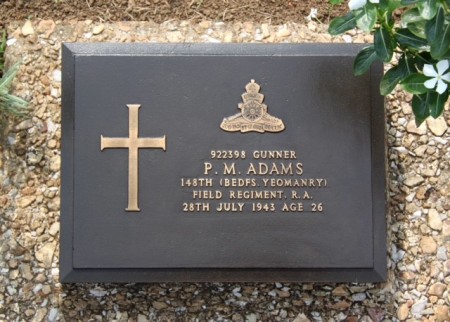
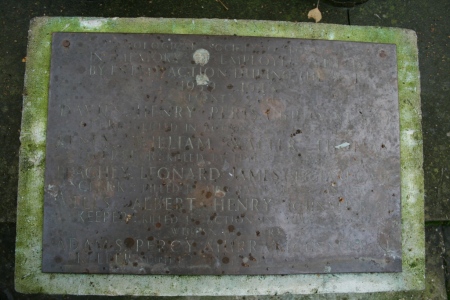


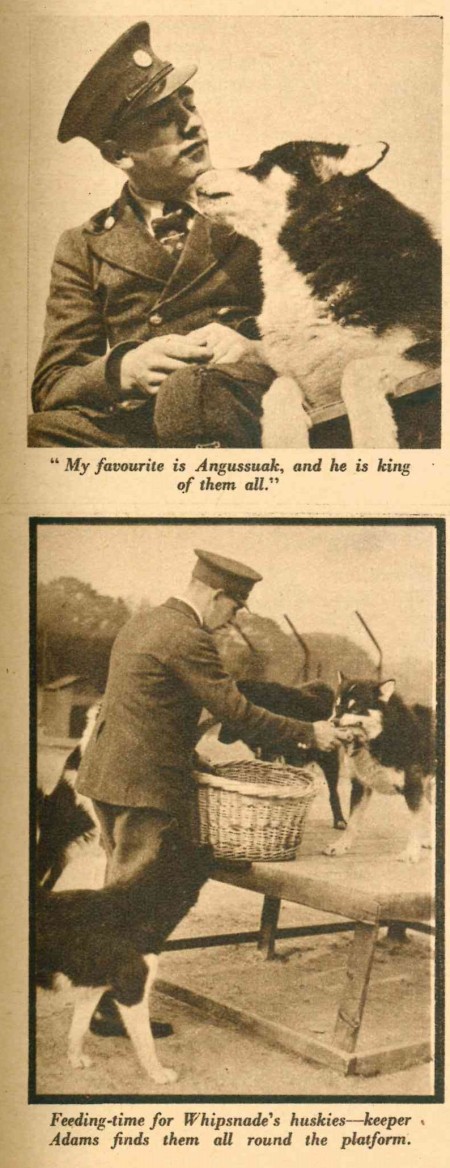
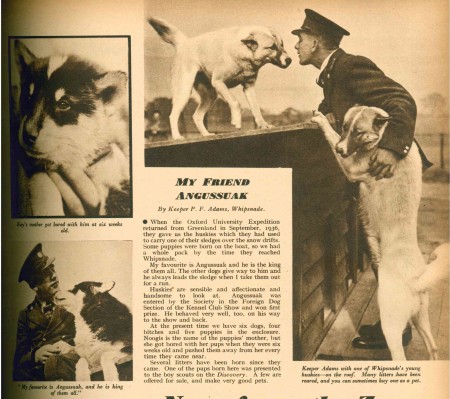
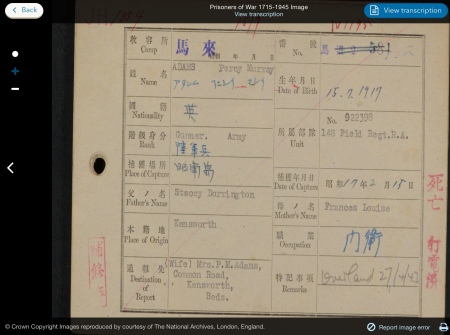

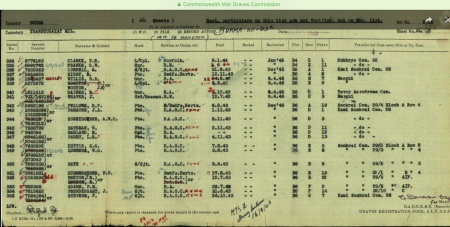











 Living Memory is a project with CWGC to mark the 141 days of the Somme campaign and encourage people across communities and schools to connect with local CWGC burials and cemeteries in their areas.
Living Memory is a project with CWGC to mark the 141 days of the Somme campaign and encourage people across communities and schools to connect with local CWGC burials and cemeteries in their areas.















